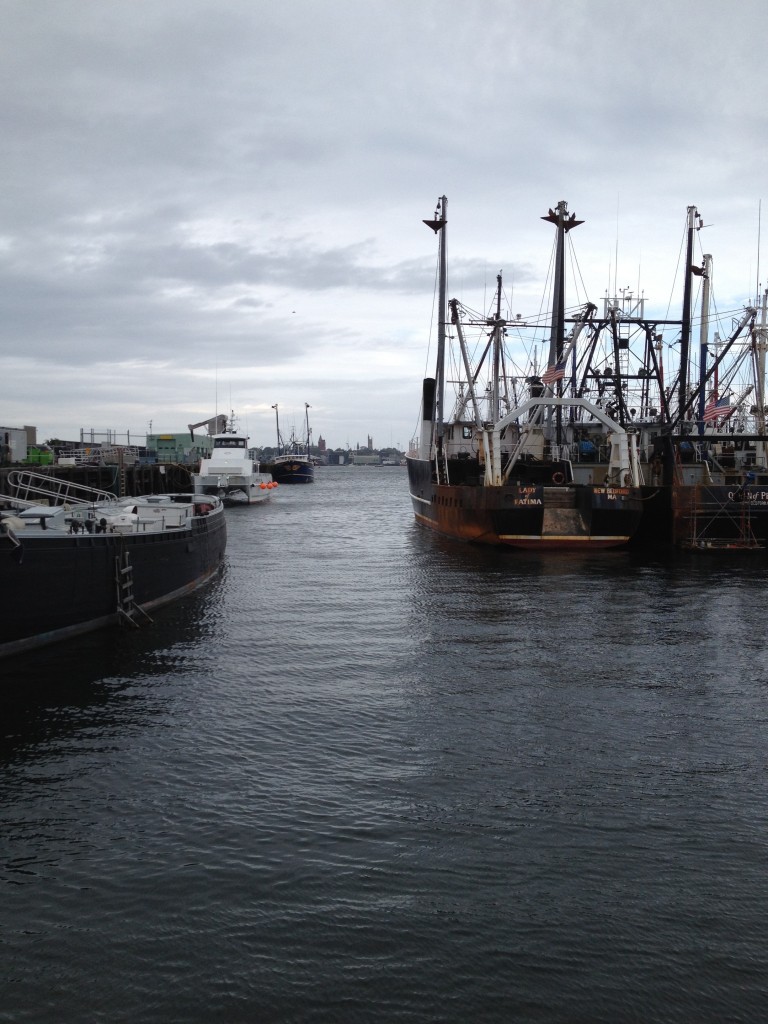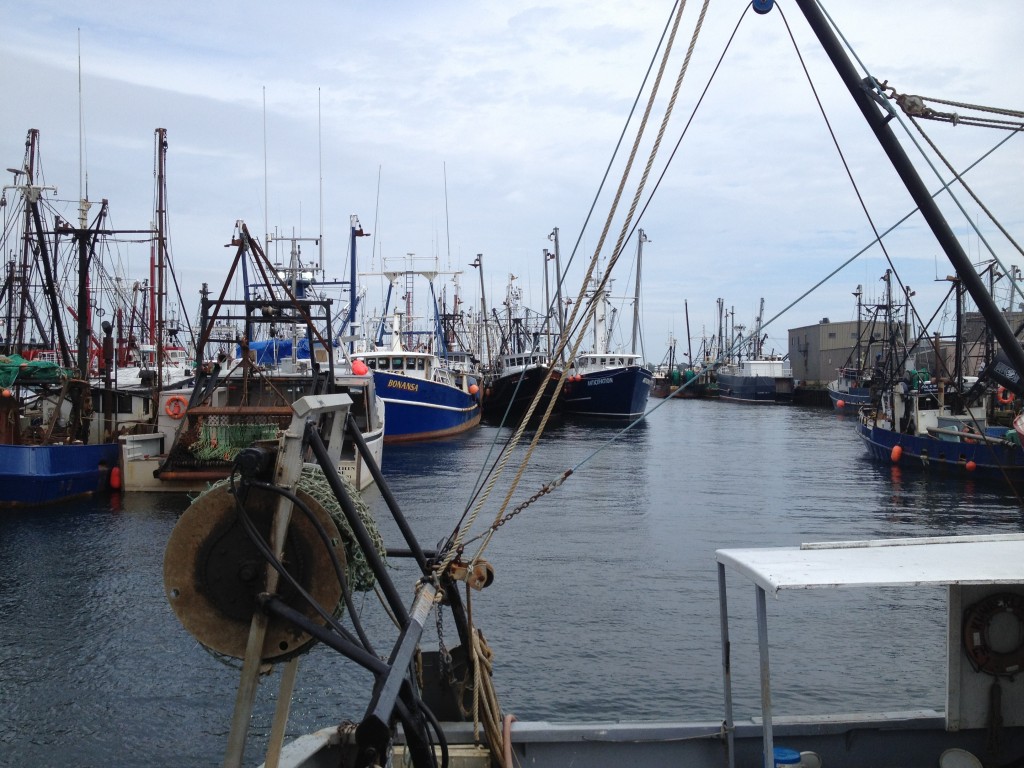
Along the Southeastern edge of Massachusetts lies the cove where the Acushnet river flows into Buzzard’s Bay. Herein is located the port city of New Bedford – a uniquely positioned city possessing a rich history but an economically challenged present. Once the whaling capital of the United States, as iconically captured in Herman Mellville’s Moby Dick, New Bedford’s whale oil trade peaked in 1860. Manufacturing industries kept the city going until they started to disappear as well during the most recent generation, and the result has been that the city of New Bedford has tragically seen no net population growth in the past two decades. Here are some photos that somewhat capture this great American port city:
Three western-rigged fishing boats sitting at a New Bedford pier:
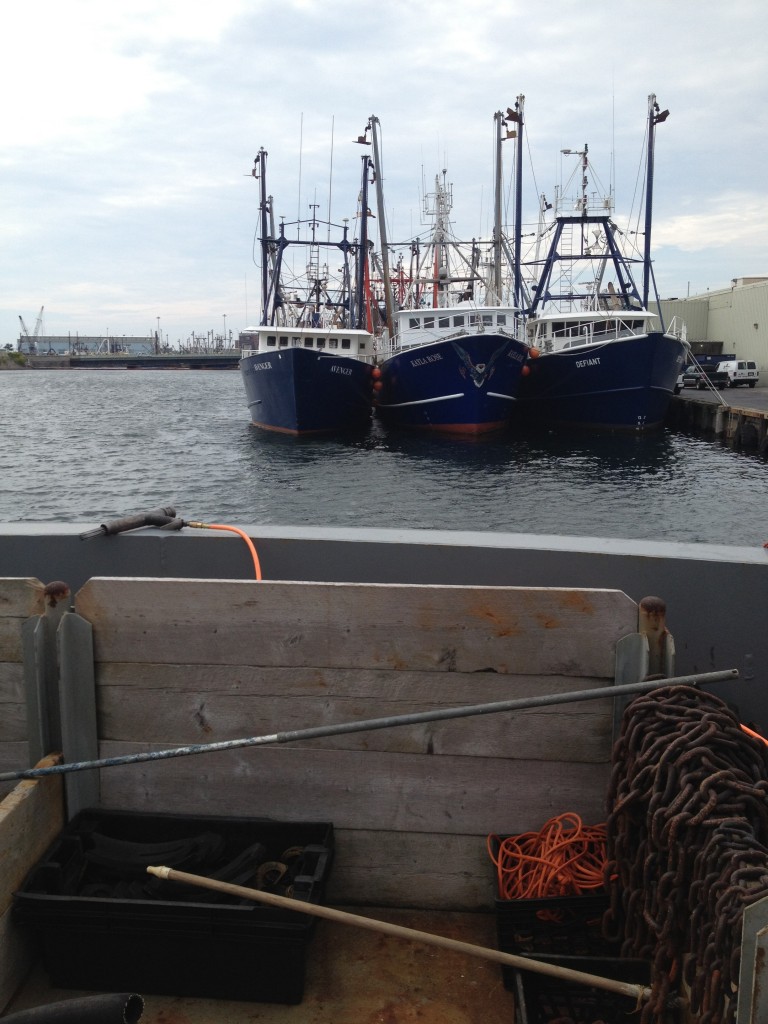
Today, New Bedford is hardly an economically depressed area, as it is a strategically important fishing port. It is the top port in the country for total catch dollar value, while coming in second place on a volume basis after Dutch Harbor, Alaska. Scallops are the major driver of the high catch value, as more than half the scallops imported into the US each year can come in through New Bedford. Here are some photos of a real New Bedford scalloper:
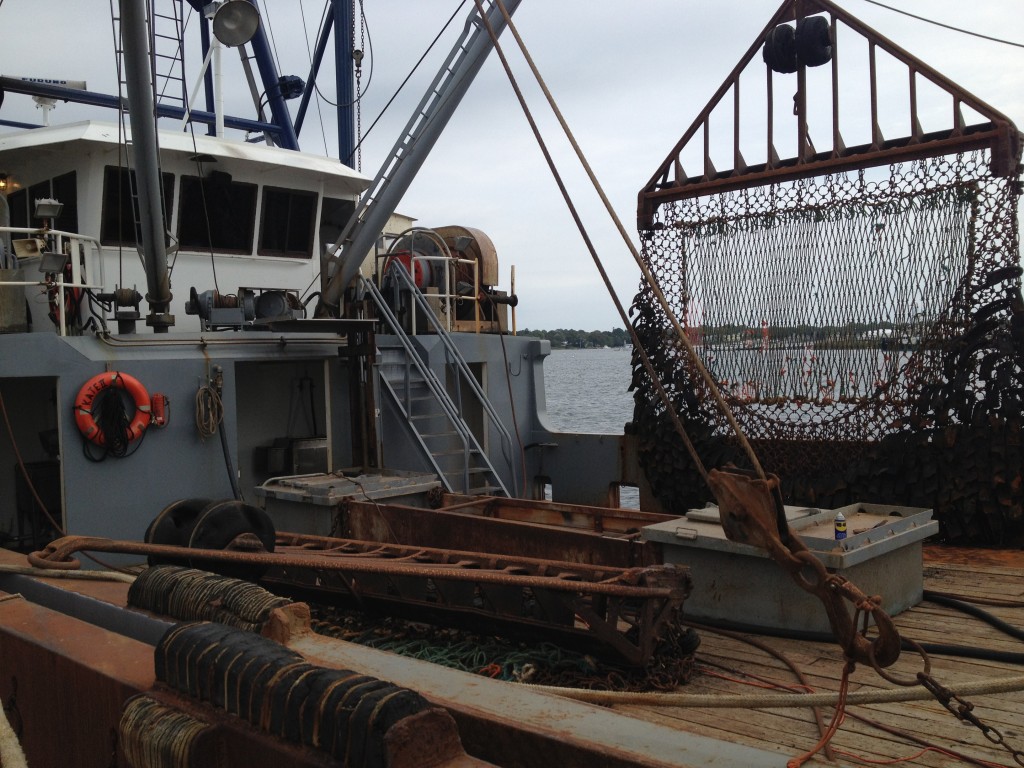
The large drag net up close:
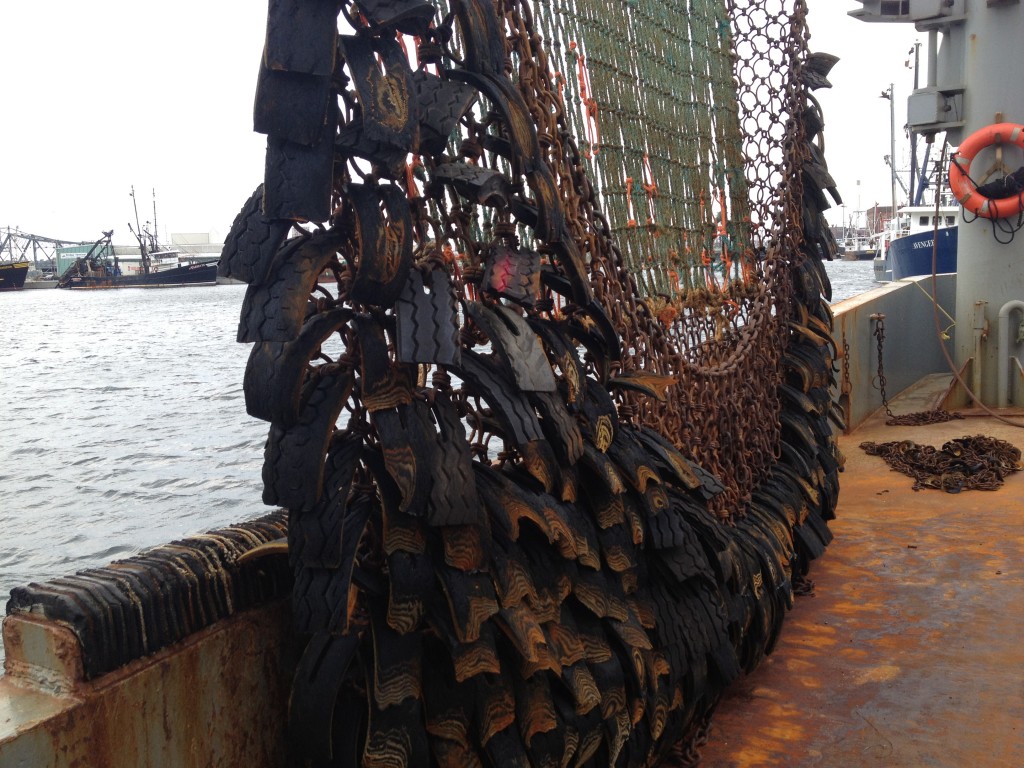
At almost every point, Modern New Bedford offers views that are unique in coastal America. Here, through the harbor, one can get a glimpse of the steeple of a church in Fairhaven, MA, across the Acushnet river sound:
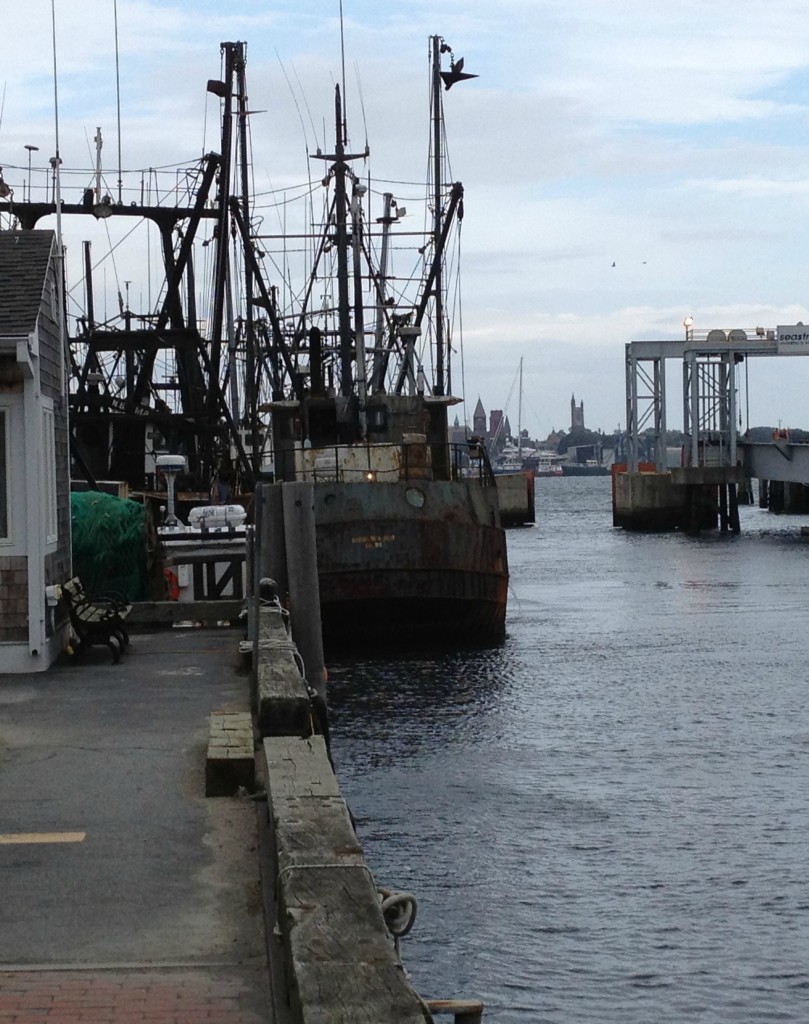
Butler Flats Lighthouse, which sits just outside the breakwater protecting New Bedford’s Harbor from the choppy waters of Buzzard’s Bay:
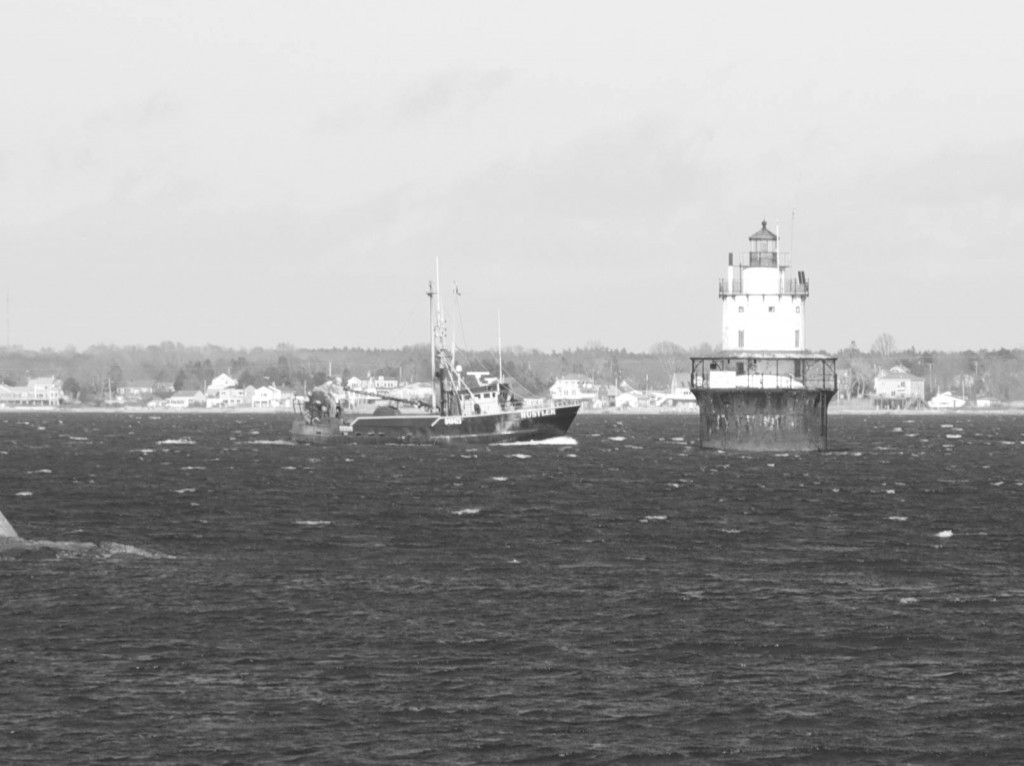
Old factories like this one on Clark’s Cove line the New Bedford Skyline, remnants of the city’s days of manufacturing might:
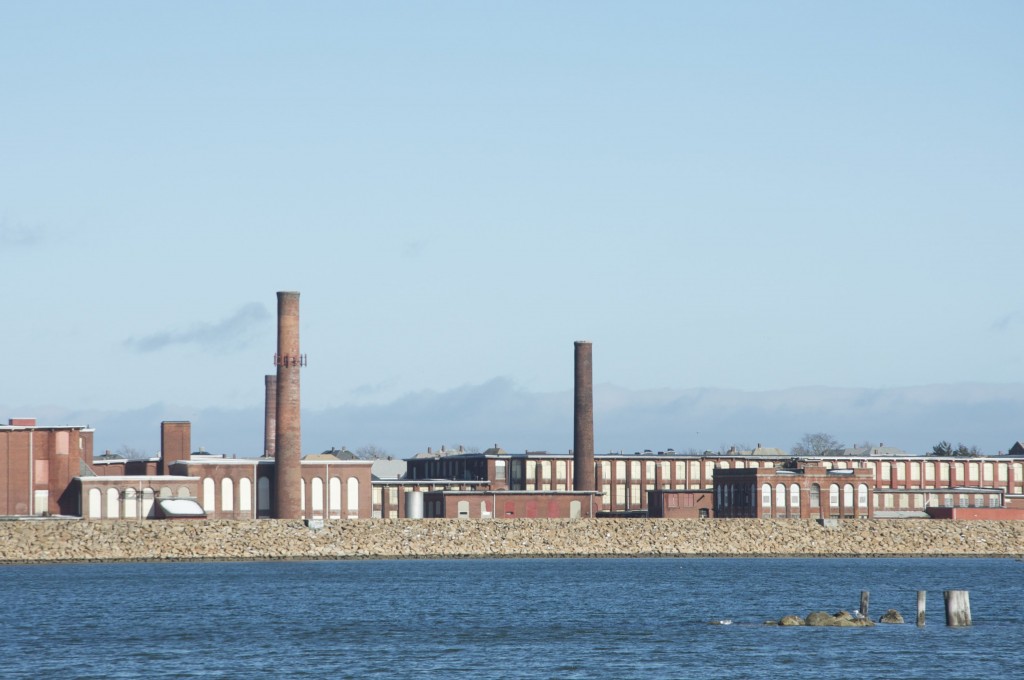
Visiting New Bedford by boat may be best done in conjunction with a broader trip to the Buzzard’s Bay area. Boaters will certainly appreciate the access that this area provides to Nantucket Sound, Woods Hole, The Cape Cod Canal, and open Atlantic ocean directly to the south. To the North, the coast of Buzzard’s Bay is filled with marinas such as Barden’s Boat Yard in Marion, MA which offer transient slips and more leisurely, less commercial atmosphere than the City of New Bedford. The chart below shows New Bedford’s location relative to Buzzard’s Bay:
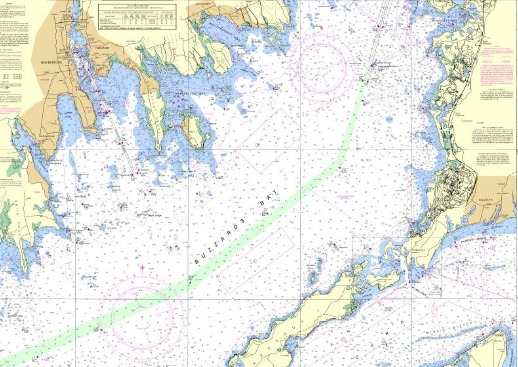
All chart clips contained herein are NOAA Nautical Charts. Not for offcial use or Navigation. See disclaimer at NOAA.gov.
Visting New Bedford
Below is a photo of 1st Street in downtown New Bedford, location of the Mariner’s Home and Seaman’s Bethel, setting of the earlier chapters of Melville’s Moby Dick. This is the place to which Melville reflected that “…nowhere in all America will you find more patrician-like houses; parks and gardens more opulent, than in New Bedford”. The area is quite well preserved and is worth visiting for the historical sights as well as the New Bedford Whaling Museum.
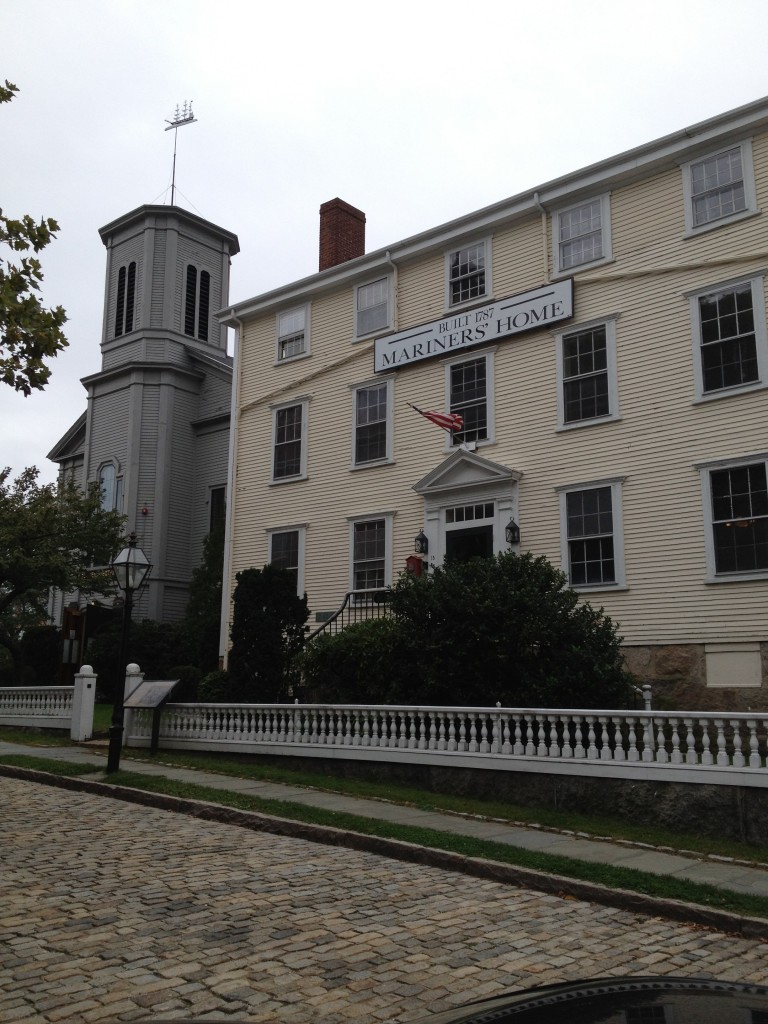
The church of St. Anthony of Padua. Built in 1902 to primarily serve New Bedford’s French Canadian Catholic Population, this imposing structure continues to hold the title of the tallest church steeple in all of New England:
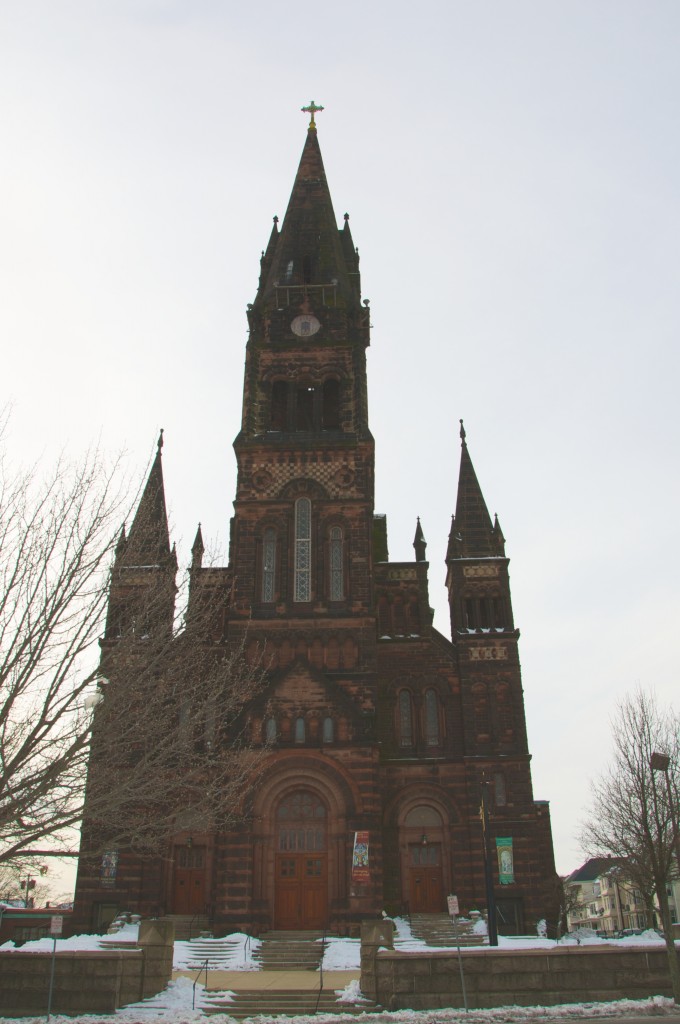
Downtown New Bedford retains the historic buildings and cobblestone streets reminiscent of the period in which it was the whaling capital of the world:
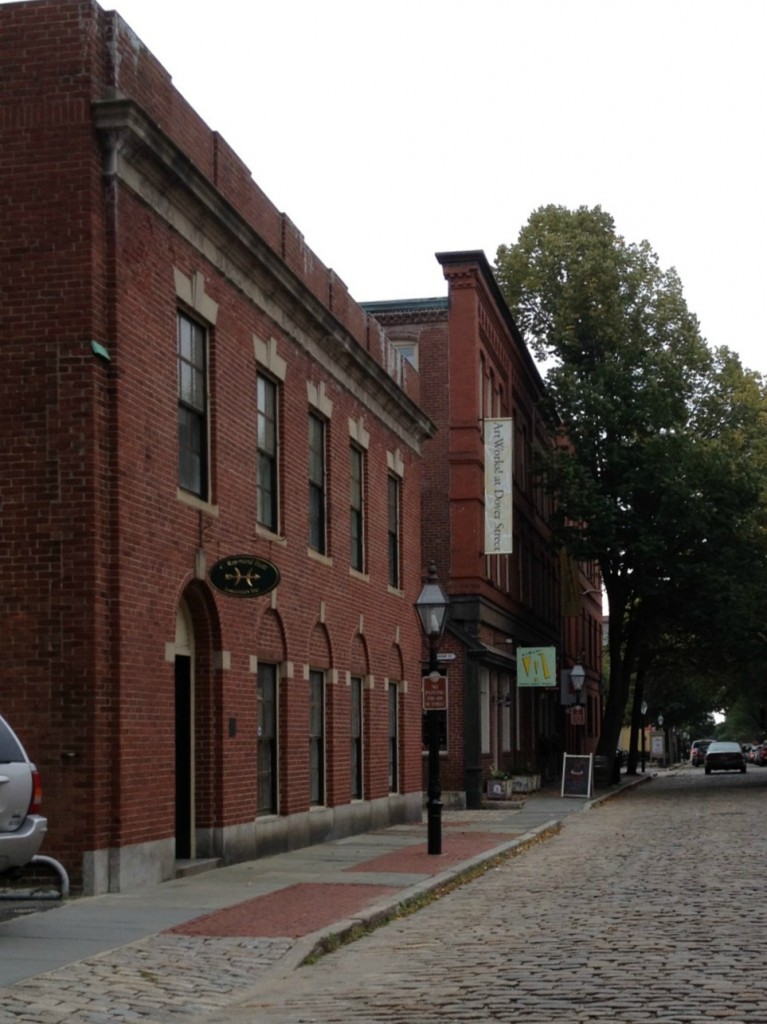
This skeleton of Sperm Whale – the primary species targeted during the heyday of the Whaling industry- is one of the many real whale skeletons on display at the New Bedford Whaling Museum:
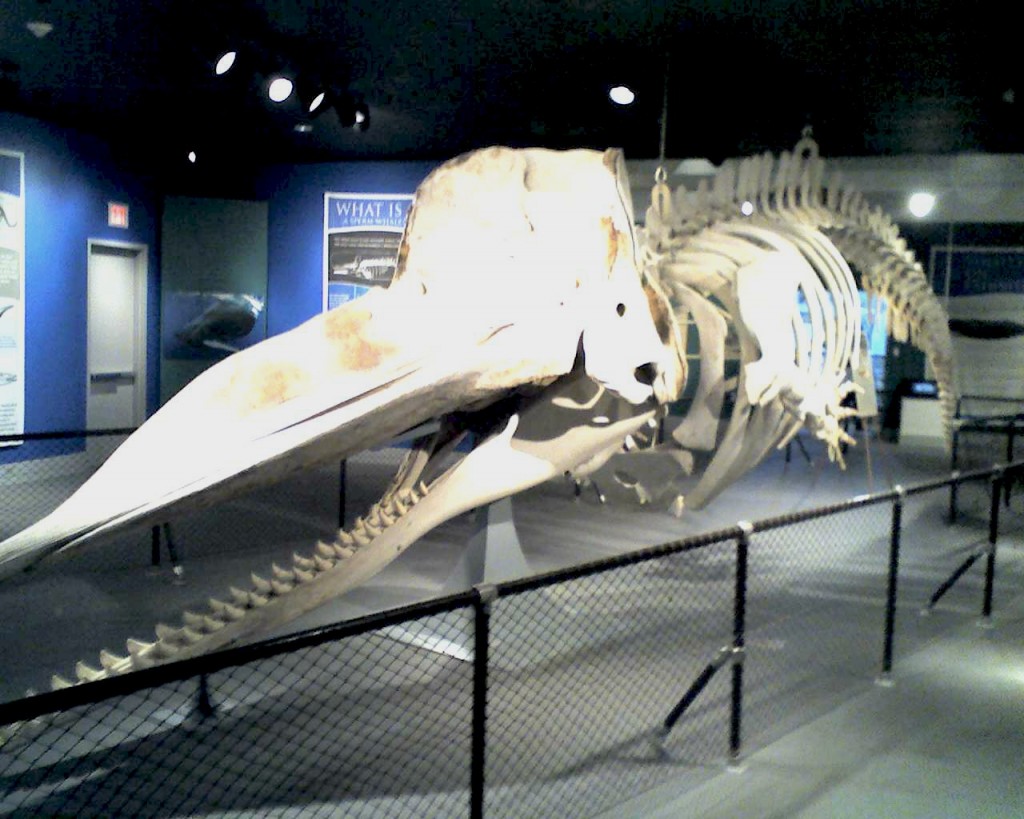
Fishing vessels lined up in New Bedford Harbor on a blustery cold fall afternoon:
